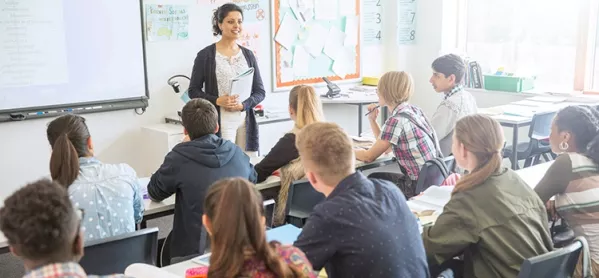- Home
- Five key points from today’s school census data
Five key points from today’s school census data

The Department for Education has published new figures today providing a breakdown of the size and characteristics of the country’s schools.
Here are five things we have learned from the latest figures.
1. The bulge in pupil numbers is moving into secondary school
After years of coping with big increases in primary school numbers the bulge in numbers in the system is now moving through to secondary schools.
The figures show that between January 2017 and January 2018 the number of pupils across all school types rose by 66,000. Although some of this increase was still in primary schools, with 26,600 more pupils in January 2018 than in 2017, most of the rise is now seen in secondary schools.
Numbers increased by 35,400 between 2018 and 2017, compared to a 29,700 increase between 2016 and 2017). There are also 5,300 more pupils in special schools compared with last year.
2. Infants in classes with more than 30 pupils
The figures show that the number of infants in classes with more than 30 pupils has fallen for the third consecutive year but remains higher than it was five or ten years ago.
There are now 4.9 per cent of infant pupils in classes of more than 30 pupils according to the DfE. This is compared to 5.4 per cent in 2017, 5.8 per cent in 2016 and 6.2 per cent in 2015.
However, it is higher than in 2013 when the figure was 4.6 per cent or in 2008 when it was 1.8 per cent. The government changed the regulations to allow more circumstances in which class sizes could be over 30 in 2012.
The overall average class size at primary school is 27.1 pupils - which is the same as the previous two years. In secondary schools, the average class size is 21.2.
3. There are more secondaries and all-through schools but fewer primaries and nursery schools
Over the last 12 months, the number of primary schools has fallen by 20 while the number of secondary schools has risen by 28. There are also three fewer maintained nursery schools. Education secretary Damian Hinds was warned by MPs at the education select committee yesterday that the viability of the nursery school sector was being undermined by a lack of long-term certainty over their funding
Nationally, the total number of schools has increased by 35 to 24,316 because of the rise in the number of state-funded secondary schools (28 more than in 2017), special schools (six more), pupil referral units (1 more) and independent schools (23 more).
The number of all through schools increased from 150 in January 2017 to 163 this year.
4. The number of ethnic minority pupils has increased
The proportion of pupils from minority ethnic origins has been rising steadily since 2006.
In primary schools, 33.1 per cent of pupils of school age are from minority ethnic backgrounds, an increase from 32.1 per cent in January 2017.
In secondary schools, 30.3 per cent of pupils are of minority ethnic origins, an increase from 29.1 per cent in 2017.
DfE figures show that 66.1 per cent of pupils in state-funded primary schools were white British. There are 11.1 per cent of primary pupils from an Asian background, 7.8 per cent who were white non-British, 6.2 per cent who were mixed race and 5.5 per cent who were black.
In secondary school, 68.2 per cent of pupils were white British, 9.8 per cent of pupils were from an Asian background, 6.8 per cent who were black, 5.8 per cent who were mixed race and 4.5 per cent who were white non-British.
5. Titan primary schools continue to rise
The number of ‘titan’ primary schools with more than 800 pupils in them is continuing to rise with 129 now teaching more than 119,000 pupils between them.
This is an increase on the 122 last year and up from 109 in 2016 and 87 in 2015.
There are 19 primary schools with more than 1,000 pupils in them. Of these one school had more than 1,600 pupils and six had between 1,201 and 1,300 children.
In 2015, Tes revealed that the number of titan primary schools was increasingly rapidly through a combination of the pupil places crisis, a lack of building land and a squeeze on budgets.
Keep reading for just £1 per month
You've reached your limit of free articles this month. Subscribe for £1 per month for three months and get:
- Unlimited access to all Tes magazine content
- Exclusive subscriber-only stories
- Award-winning email newsletters



